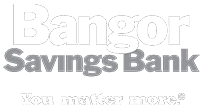
An effective branding strategy makes your business stand out in a competitive marketplace. Online, it helps you cut through all the competing hoopla to get attention from your audience.
Without a brand, you can easily get lost in the crowd. With one, all shoppers have to do is simply see your emblem to know who you are and the type of selling experience they can expect. To them, your brand means a solution to the problem they are trying to solve.
What It Is and Isn’t
The official definition of a brand, from the American Marketing Association, is
“a name term, sign, symbol or design, or a combination of them intended to identify the goods and services of one seller or group of sellers and to differentiate them from those of other sellers.”
However, most experienced marketers see it as more nuanced. To them, your brand is the story of your company that you present to the world. It is your essential truth and the value you provide.
Branding is different from ads and marketing. Marketing is promoting your product using specific strategies. However, branding is what underpins and supports your marketing efforts. If marketing is tactics, then branding is the strategy.
Strategy Basics
Your strategy is everything you want to communicate about your business to your target audience. This includes the what, where, how of your products and services, in a way that is meaningful to your potential customers.
The more effective you are conveying the message of your value, the more equity you build in your brand. With consistent effort and uniform branding across all platforms, your target consumer will start seeking you out. In time, your brand will allow you to charge more than unbranded products and services.
Coca-Cola costs more than store-labeled sodas, though it is questionable how much difference there is in the actual taste. But the difference is perceived, and the consumer is willing to pay more based on that perception.
In time, shoppers develop an emotional connection with a brand. This increases its worth it in their eyes. The process might start with a celebrity endorsement. Gradually, the customer’s warm feelings for the athlete or actress transfer over to your product.
Definition Basics
It takes effort to define your brand in a way that reaches your audience. Here are four questions to answer in defining your brand:
- What is your mission statement?
- What does your target audience think of your company now?
- What are the best features of your products or services?
- What qualities do you need to leap into the minds of your customers when they see your brand?
The more you know about your ideal customer, the person you are marketing to, the easier it is to develop a brand. What are their needs, problems, habits, lifestyle, and goals?
It takes time and effort to come up with useful answers. Ask other members of the company, your friends, and anyone you know who has used your service or product. Consider getting shoppers to answer a survey in return for a reward.
You need the best possible range of answers to come up with an effective brand.
Execution Basics
Things get easier from here. Getting the word out is still time-intensive, but by this time, you should already have all of the information you need to create the brand that will engage the customers you are seeking.
You need to start with a logo that is eye-catching and concise. Then, put it on everything that connects with the public. This includes stationery, business cards, promotional pieces, email, social media, website, and print and online ads.
Come up with a message that communicates the essence of your company and product. Make sure every employee understands this message and passes it on. This might even influence how you answer the phone and what your salespeople wear when meeting with customers.
If your brand is upscale, convey your essence formally. If it is friendly and casual, then be conversational and low key. Be consistent with your brand and how you present the message.
Consistency is the only way shoppers will come to know your brand. Without consistency you risk wasting your time and money. That means following a template across all mediums and platforms for all marketing materials. Everything must have the same look and feel, including the color scheme, typefaces, and how the logo and graphics are presented.
Most importantly, deliver on the promises implied in your message and overall branding. It will attract shoppers again and again only if they have a good experience with your service and product.
Brand recognition will give your business repeat sales and a strong bottom line. Take the time to figure out the best one for your business and use it consistently.
